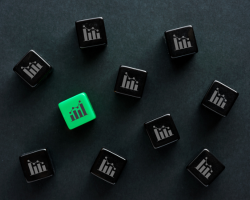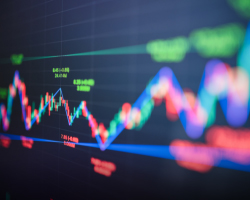Best Forex Trading Indicators Every Trader Should Use
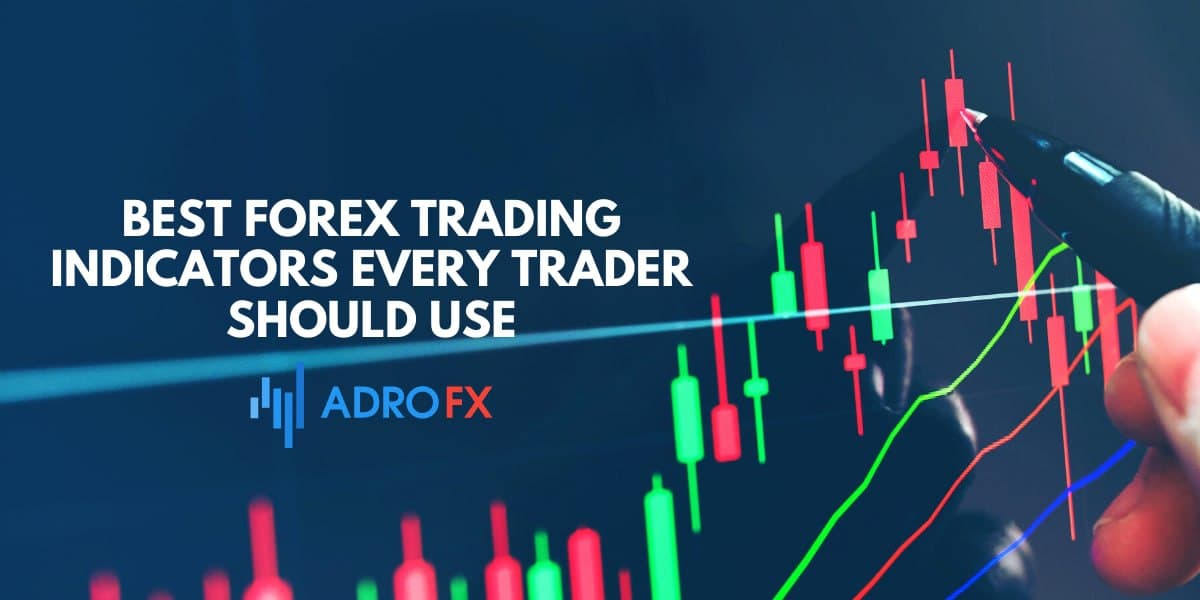
It's not a secret that to trade successfully on the forex market, it is required to constantly carry out technical analysis of the chart. In practice, there are so many methods to study the currency market, but they all require considerable time. That is why traders use forex indicators to facilitate the trader's work at this stage.
The goal of every technical forex trader is to choose an optimal set of indicators so that they filter out false signals and confirm each other for a correct market entry. At the same time, it is necessary to make sure that indicators provide the trader with different types of information about the market, only then you can be sure that the signal is not duplicated by indicators.
So, today we will talk about the best forex indicators in the context of different trading strategies.
What is a Trading Indicator?
A forex indicator is an auxiliary tool that facilitates technical analysis of the market. It is the basis for more than a thousand trading strategies, some of which have allowed their authors to achieve great success in trading.
Forex indicator is a special program that works based on mathematical algorithms and helps the trader to more effectively read the chart, monitor the situation in the market, to make decisions regarding the placing of orders. Thanks to indicators traders can more accurately foresee future price movements, better analyze current movements.
In addition to general information, some indicators can give quite specific signals to enter/exit the market, marking successful points for opening positions.
What traders used to do for hours and manually, now can be calculated in automatic mode by a good indicator, properly preset and suitable to the trader's trading style, conditions, currency pair, etc.
Trading Indicators Categories
Forex indicators can be divided into two categories: leading and lagging. These are tools that compare various indicators of activity to determine potential economic situations or movements in financial markets. Simply put, leading indicators provide information about an upcoming economic cycle or market trend change. Lagging indicators, in their turn, take the past price fluctuations as a basis and give an idea about historical data of a certain market, economy, or asset.
In other words, leading indicators provide signals with a certain prediction (before a certain event or trend change), while lagging indicators signal based on the existing trend. These two classes of indicators are common among investors and traders who use technical analysis, as these tools are very useful for trading in the forex market.
Besides, leading and lagging indicators are used to display different economic indicators and as such, they are not always related to technical analysis, market prices, and other economic variables and indices.
Leading indicators
As already mentioned, leading indicators provide information about a trend that has not yet manifested itself. Consequently, these indicators can be used to predict potential recessions or price recoveries, for example concerning stock market performance, retail sales, or building permit applications.
Thus, leading indicators move ahead of the current economic cycle and are generally suitable for short- and medium-term analysis. For example, building permits can be considered a kind of leading economic indicator. This indicator can signal future demand for construction labor and investment in the real estate market.
Lagging indicators
Unlike leading indicators, lagging indicators are used to identify existing trends that may not immediately manifest themselves. Thus this type of indicator lags behind the general economic cycle.
As a rule, lagging indicators are applied to the long-term analysis based on the historical indicators or previous price data. In other words, this type of indicator generates signals based on a market trend or a specific financial event that has already occurred or has been initiated.
Coincident indicators
Even though this type is less popular in the trading world, there is still a third category of indicators worth mentioning and they are called coincident indicators. Such indicators fall in between the two aforementioned. They work in real-time, providing information about the current situation.
For example, a coincident indicator can be created by measuring the working hours of a group of employees or the productivity level of a particular industry sector, such as manufacturing or mining.
Keep in mind, however, that the definition of leading, lagging, and coincident indicators are not always very clear. Some indicators may fall into different categories depending on the method and context.
Forex Trading Indicators Types
It is not that easy to name the best forex indicators because much depends on the work style of a particular trader. One trader can work successfully with a pair of moving averages, the second would prefer the Stochastic, the third would give preference to the Bill Williams' indicators - there is no universal recipe.
The main difficulty for the beginner is to choose the best forex indicator that suits his work style. ll indicators can be divided into two main classes:
- Trend indicators
- Oscillators
Two more subtypes can be distinguished between them:
- Volume indicators
- Channel indicators
The trend indicators follow the trend. One of the foundations of most trend indicators is a Moving Average, which has many varieties. Forex indicators based on this line allow you to trace a trend and see both its beginning and its end, especially when several MAs are combined.
Oscillators work well in a range of conditions on the market, that is when there is no pronounced trend. Such indicators are drawn in a separate window from the chart and most often are presented in the form of a curve or curves, which fluctuate within a certain range.
The most famous oscillators are Stochastic and Relative Strength Index. Their advantage is that they allow you to see in advance when the price can make a U-turn and move from one trend to another (but only in range conditions!).
Among others, there is a separate group - the indicators of Bill Williams - a legendary trader and analyst, who made many innovations in technical analysis, overturning its established rules.
To choose an indicator you should clearly understand:
- what market the chosen indicator is suitable for;
- the principle of its work - what it shows and how its values are calculated;
- how it is used in the work.
Knowing which one belongs to which category and combining them in a meaningful way helps you make much better trading decisions. On the other hand, combining them incorrectly leads to confusion, misinterpretation of price, and, consequently, to erroneous trading decisions.
Forex indicators are free to download, and the description of their work will allow you to immediately understand how they work. For each of the described algorithms, the analysis of the operation principle, settings, and recommendations for use are given. Most of the indicators are custom indicators that can be used both during the trend and the flat sections of the market.
Now, we will move to the description of the best forex indicators used for different trading strategies.
Best Indicators for Swing Trading
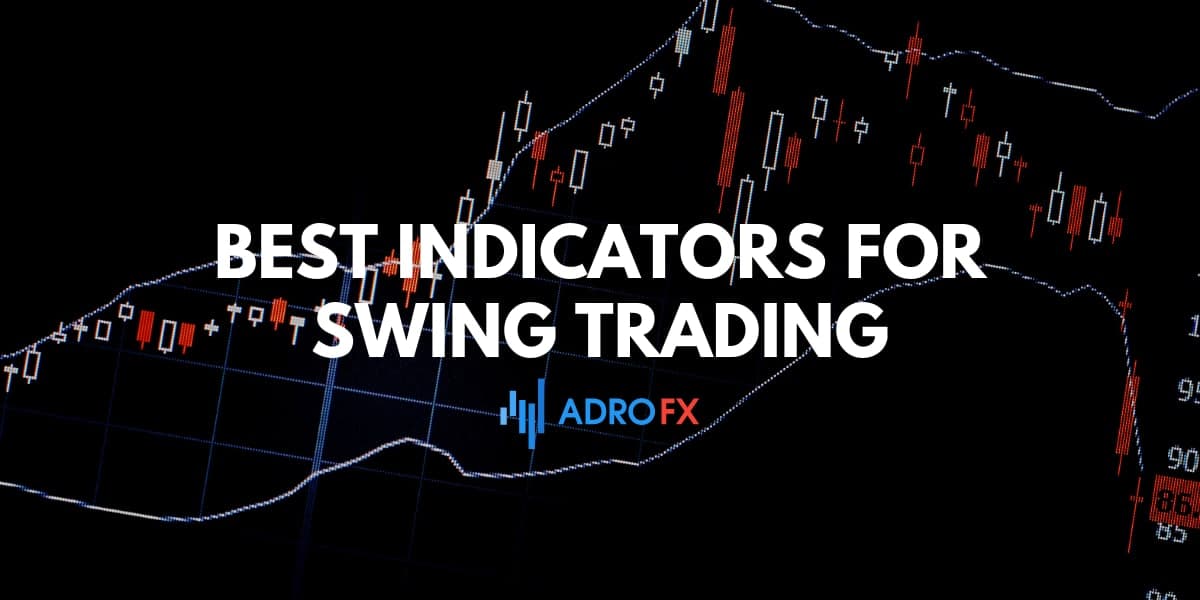
We have compiled a list of the best swing trading indicators that stand out for their simplicity and the effectiveness of their trading signals.
Below are six of the most popular and reliable indicators used in swing trading:
Relative Strength Index (RSI)
The RSI forex indicator is one of the most important indicators in technical analysis. It is a momentum oscillator, and you can find it in the "Oscillators" category of your chart. It calculates the size and amplitude of recent price changes. Swing traders mostly use RSI to determine overbought and oversold levels.
<
The indicator is displayed as an oscillator, i.e. as a line graph, which moves between two highs and can range from 0 to 100. The RSI line rises when the number and size of bullish closes increases and falls when the amplitude of losses increases.
The straightest RSI signal appears when the indicator breaks through 70 levels. This indicates an overbought level, which can be used to anticipate a reversal into an uptrend. If the RSI reaches a zone below 30, it indicates that the market is oversold, which in turn means that the bear market will end soon.
Another way to use the RSI is to look at crosses in the center. For example, when the indicator crosses over the centerline, it indicates an upward trend.
Moving Averages
Moving averages (MAs) are the first technical indicator to be applied to a decade in the analysis of commodities and company stocks. As the name says, it counts the average price of assets over a given period. As a result, MAs smooth out the short-term volatility that can confuse traders.
It is important to understand that the MAs are an indicator based on past price movements. Therefore, it is more useful as a trading strategy indicator confirming a trend rather than predicting its future movements.
You can divide MAs into short-term, long-term, and medium-term, depending on what time frame it shows. For example, short-term MAs show a period between 5 and 50, while average MAs go up to 100.
<
There are two main types of MAs: simple moving averages (SMAs) and exponential moving averages (EMAs). The latter shows more recent price changes.
The best way to use MAs is to look for when the short-term MA crosses the long-term MA. If the formed crossover is more extended from the bottom to the top - it is a bullish signal, and vice versa.
MACD
The MACD is a more sophisticated technical forex indicator, which connects two of the moving averages we discussed above. The MACD is calculated by subtracting a period of 26 EMAs from a period of 12 EMAs, though these parameters can be adjusted to fit your needs. The two lines displayed on the MACD chart do not represent the two MAs used for the calculations. Instead, the MACD indicator is attributed to the following elements:
The MACD line, which calculates the distance between the two MAs;
<
A signal line which can identify sudden changes in price and is seen as a trigger for both bullish and bearish signals;
A histogram shows the difference between the MACD line and the signal line.
Swing traders usually buy when the MACD line crosses the signal line from above and short when the MACD crosses the signal line from below.
Another way to use the MACD is to look for discrepancies between bar charts and price movements, which usually signify a trend reversal.
Volume
The volume indicator is one of the most critical for swing traders, so beginners usually ignore it. This indicator is shown under the main chart and gives an understanding of how reliable the newly formed trend is. To put it simply, the volume indicator shows how many traders are buying or selling an asset at a given period. Thus, the higher the volume, the stronger the trend.
<
The volume indicator is especially useful for breakout trading strategies, i.e., when the price of an asset breaks above the resistance line or below the support line. If the breakout is accompanied by high volume, then the new trend will be strong.
Bollinger Bands
Bollinger Bands (BB) is a momentum forex indicator that consists of three lines: a moving average and two standard deviation lines: positive and negative. Swing traders love this indicator because it can quickly identify trends, overbought and oversold levels, and volatility. It looks simple and clean on the chart.
The width of the BB increases with volatility and decreases when the market calms down. The closer the bands are to each other, the lower the volatility.
<
As the Bollinger Bands perform well in trending markets, they also work well in large price ranges, i.e. up and down movements within a horizontal corridor. In such cases, if the price leaves the upper Bollinger band, swing traders may go short. When the price touches the lower indicator line, it can herald a rebound.
The point is that price will always tend closer to the center of the BB. If the bands widen, it means that a new trend is forming, and you should not trade in that area anymore.
Stochastic
The Stochastic Indicator is another momentum indicator and works much the same way as the RSI, the only difference is the calculation. The indicator compares the closing price of an asset to its price range over a given period.
<
Like the RSI, the Stochastic presents a chart between zero and 100. In this case, though, the overbought and oversold zones are above line 80 and below line 20, respectively.
Another difference is that it has two lines, not one like the RSI. One of the lines shows the Stochastic Volume now and the other shows the three-day MA.
Traders use the Stochastic indicator to determine overbought and oversold levels. They also look for crossing lines, which generally means a trend reversal.
Best Indicators for Day Trading
Since the trend shows the maximum probability of price movement, and day trading also works with probability, trend indicators for day trading can also be used. The most common one is the MA. But it often happens that in one trend it can work with a certain parameter, but in the next one it interacts better with another. Various programs calculate the optimal parameter based on history. But for day trading, the optimization is less applicable, since while the optimizer recalculates, the trend can finish, and another parameter will become optimal.
The solution is a method based on tendency planimetry where multiple MAs are derived simultaneously. It is considered that when MAs are intertwined and form a bundle, the market is sideways, the borders of which are determined by fractals, formed on the price peaks. When the price breaks through a fractal, it is considered that a trend has begun, and in the trend, it is determined by the MA parameter from which the bounce takes place. And it will be assumed that the next bounce will occur from the same MA. And the denser the MAs are squeezed, the more likely the impulse along with the trend because some enter by one parameter, some by another, and together they strengthen the impulse.
Oscillators, in the basic sense, determine the overbought and oversold zones of an asset. But when a trend appears, oscillators start giving false signals to enter against the trend. A trend filter is applied to them by adding a trend indicator. In this case, it is assumed that in uptrend trades are made only to exit oversold and mirror the opposite for a downtrend.
But it should be considered that each oscillator has its calculation basis. For instance, the RSI is calculated using closing prices, which is acceptable for longer-term trading, but worse for day trading.
The Stochastic is much better suited to day trading because it uses highs and lows in its calculation. And within a single candle, these prices can be very different from the closing prices.
Stochastic, too, should be used with trend indicators, such as the pair MAs, which, when crossed, indicates a trend. It should be considered that both trend indicators and oscillators in day trading are better to take with slightly faster parameters than in long-term trading.
Technical forex indicators can and should be used in day trading, but their signals should be perceived as a range of possible orders, not as an indication of entry into the market.
Best Indicators for Stock Trading
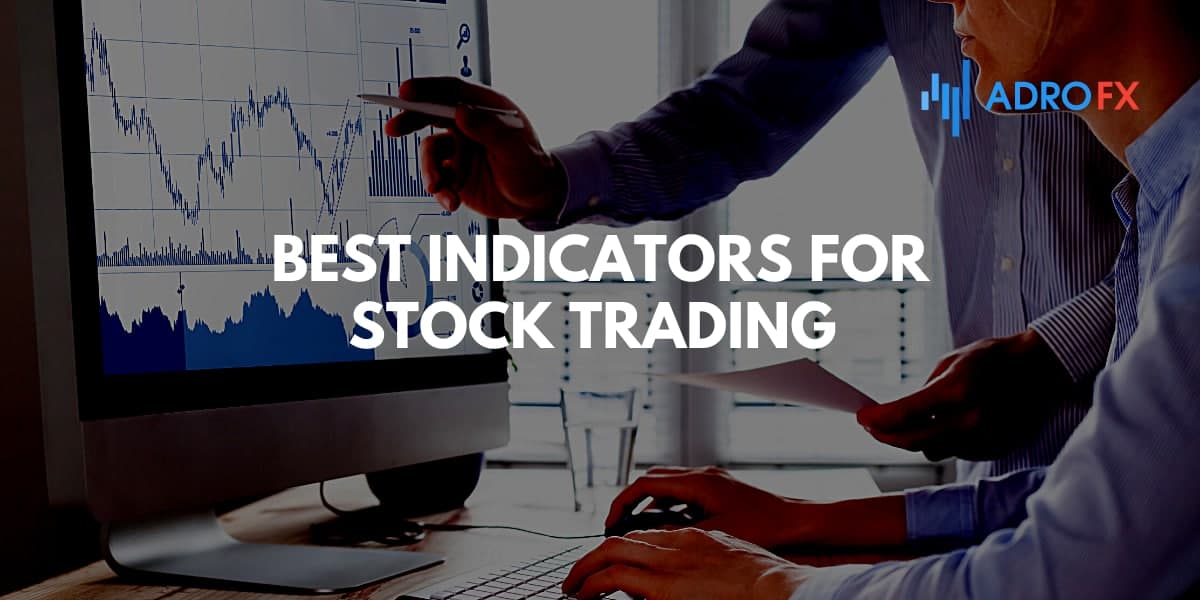
Technical indicators are as vital to predicting price movements in the stock market as a hammer to nailing tiles to a roof. Without them, the investor would essentially be blind, acting on instinct and risking his capital.
Moreover, some technical indicators are so accurate that they are the basis for popular in-depth research and analysis tools.
While all investors should pay attention to some technical indicators, they are not that important to the investor looking for long-term stock returns rather than short-term price fluctuations.
Of course, no one would be tempted to buy an overbought stock, as that would cause the investment to likely suffer initially rather than achieve the long-term growth that was predicted. However, technical data should not be the driving factor in an investor's decision to buy or not buy a stock.
If you want to use a short-term trading strategy, correctly predicting price movements will be challenging, but not impossible. By attaching great importance to technical indicators, you can greatly increase your chances of trading success.
Some of the most accurate ones include Support&Resistance), Moving Average (MA), Exponential Moving Average (EMA), Relative Strength Index (RSI), Bollinger Bands, Stochastic oscillator, On-Balance-Volume, Ichimoku cloud, Fibonacci retracement levels, etc.
Let's look at the Support&Resistance indicator. It is designed to help the trader in daily stock trading. It automatically finds levels with which the price actively interacted before and plots them on the MT4 chart as rectangular zones.
The price range (height) of the support or resistance depends on the spread of the highs and lows through which the level passes. Resistance is indicated in orange, and support in blue. The Support&Resistance indicator does not redraw. However, the appearance of new highs/minimums in the range of specific support/resistance may expand their height.
Support and resistance levels are crucial price points that help traders when placing orders in the stock (or any other) market. Therefore, the S&R indicator is well compatible with any other indicators and trading systems. Of course, if you are a beginner, it is essential to learn how to build support and resistance on your own. However, the S&R indicator can be a good help until you are proficient enough in the level drawing.
Also, the indicator will be useful for experienced traders because it saves time in constructing levels.
Best Indicators for Option Trading
Stock options are considered standard options. In the Western forex community, they are also called "vanilla" or classic. Essentially, an option is a type of contract that gives the participant the right (not the obligation) to purchase or, conversely, to sell a certain amount of an asset at a predetermined price. Such a contract must be realized by a certain date. Sometimes the price is not explicitly agreed, but the formula, by which it will be found when the term comes, is written. It, by the way, can be from one day to many months from the conclusion of the deal.
Options are somewhat like CFDs. It is also worth noting that, if a hundred years ago this segment of the market relations was unregulated, nowadays options are quite a safe and legal type of financial activity.
Being a derivative, that is, secondary security, an option, to be more precise, is essentially an exchange transaction. The main aspects of vanilla options are:
- To make the conceived transaction with the asset can be either in the period before the stipulated date, or on the day, which the participants of this contract have noted in advance.
- The option does not imply that the transaction must take place in any case, it is not an obligation. It means that you as a participant can make a negative decision, i.e. you can refuse to buy or sell the instrument. True, you will have to pay a commission anyway.
An option can be a buy option, which means that it gives a participant the right to buy it, in which case it is called a Call. The right to sell it is called Put. This will be discussed in more detail below. What is an Option in a nutshell? It is a right, an opportunity to execute a trading operation with an underlying asset under the conditions already set up in advance. What are its special features? Well, there are several:
- The owner of this security, if desired or because of the pressure of circumstances, may well let the option burn out. No one can force him to conduct a buy/sell transaction.
- Apart from stocks, the underlying asset of an option may be a currency or commodity.
- The buyer has the option to demand the early exercise of the rights stipulated in the contract.
- The price of the option is the premium the seller receives when he signs the deal. It must be commensurate with his risk.
Since options trading is like stock trading, one can use the same indicators we have mentioned above, in the stocks trading section. Apart from those, MFI is one of the best technical indicators for options trading.
MFI (Money Flow Index) refers to the category of instruments working with volumes and visually can easily be confused with the RSI. It is all the same broken line moving in the range of values from 0 to 100. And the calculation algorithm is similar, only instead of Moving Average, we take data including volumes.
If we try to give an understandable definition of the meaning of the indicator, it is possible to say that it shows how attractive the underlying asset looks. That is the degree of intensity of investing into it. Only the indicator dynamics are important, its value at a certain moment in time has no importance.
Thus, the indicator shows how attractive the stock at any given moment is to the investor, so it is worth including it in your trading system.
The strategy of application of the indicator reminds something of the use of instruments such as Momentum, RSI, Stochastic, although there are significant differences. The main function performed by the MFI indicator - is a fixation of traders' activity on the buy/sell of different financial assets. It determines and exerts the intensity of investment of traders' funds in the financial market asset.
Best Indicators for Scalping
Scalping is a popular type of trading on the foreign exchange market, which consists in obtaining gains using small price fluctuations. Some peculiarities of such trading impose several certain requirements to the technical indicators for scalping.
The right combination of standard indicators included in the MetaTrader 4 trading terminal may be enough for scalping.
As a rule, traders-scalpers use combinations of indicators that filter and complement each other. Very popular is the combination of indicators with a delaying signal, such as Moving Average or Bollinger Bands, and leading indicators, such as Stochastic or RSI.
Best Indicators for Crypto Trading
Some features distinguish the cryptocurrency market from classical investment instruments. First, we are talking about the high volatility of rates of digital assets and the presence of gaps. For this reason, not every indicator that effectively predicts the direction of price movement in fiat instruments can cope with its task on cryptocurrency pairs. Apart from other helpful indicators that are available for forex trading, we would like you to add to your list the following indicators for crypto trading.
Ichimoku cloud
The Ichimoku clouds indicator is a tool consisting of five lines, each line represents average values for the time periods, the total length of which can be determined by the trader. When two lines cross, the area between them is shaded as a "cloud".
If the price is above the cloud, the trend is upward, and when the price is below the cloud, the trend is downward. If the cloud moves in the direction of price, the trend should be considered strong.
Fibonacci Retracement
Like MAs, Fibonacci levels are another useful tool for predicting price movement. Fibonacci levels do not present complex and interdependent calculations but are still included in a trader's list of indicators because of their utility.
This indicator allows you to operate with standard levels of 0; 23.6; 38.1; 50.0; 61.8; 76.4; and 100. When there is a sudden price change, Fibonacci levels allow you to track such movement and draw certain conclusions about price behavior. Many traders believe in Fibonacci Retracement, which resembles a kind of self-fulfilling prophecy level.
Best Forex trading indicators: Summary
Trading indicators have long and firmly taken a place in the trading systems of many traders. They are at least good assistants for the price chart analysis, and at most - the basis of the entire trading system.
We should remember that technical forex indicators are not a Holy Grail for beginners or a secret weapon for gray-haired professionals. Even the best technical indicator for trading only supplements the global picture and show general information in a convenient graphical form. They are helpful tools, but only if used as auxiliary tools.
It's important to mention that none of them will guarantee you consistent returns. Technical indicators do not predict the future, but they can better help you understand the present and the past.
FAQ on Forex Trading Indicators

What is a forex indicator?
Indicators such as Moving Averages and Bollinger Bands are technical analysis tools that use different mathematical algorithms to analyze past prices and predict future price trends and patterns.
Is there really a better indicator for this or that trading strategy?
There is a short answer to this question - no. It is certain that there are indicators that work better than others in certain situations and trading strategies.
The best indicators for trading forex will ultimately be those that work best for you and your strategy. You can also consider using several indicators at the same time, for example, two: one to send trading signals and the other to filter them later. That will help you to make trades with the highest probability of success. Using indicators in combination with others will increase the reliability of trading signals in the future, and ultimately lead to an increase in the success rate of your trading strategy.
Whichever combination of indicators you choose, do not forget to test the results, and continually refine your strategy as more data comes in.
Are forex indicators really helpful in trading?
Whether you're trading by subjective "price action" or using a mechanical trading system relying on various signals to enter and exit trades, either way, indicators can be useful. As we have mentioned earlier, traders can use the best forex indicators for different purposes: both to get signals and, for example, to alert them to the imminent release of major economic data with the help of additional utilities. Trading can be stressful and highly concentrated, so be sure to use forex indicators to relieve some stress rather than increase it.
What is a custom indicator?
A custom indicator is a program independently developed by a user in MetaQuotes Language 4, which functions as a technical indicator. In most cases, such forex indicators can be downloaded for free and easily installed to the trading terminal.
About AdroFx
Being a well-established brokerage company, AdroFx offers the best trading conditions to its clients from 200 countries. Founded by experts with a couple of decades of overall experience, AdroFx is one of the best platforms on the market for shares trading. Either a newbie or experienced trader, both will find here what they are looking for since the company provides various trading accounts for different trading styles and goals.
